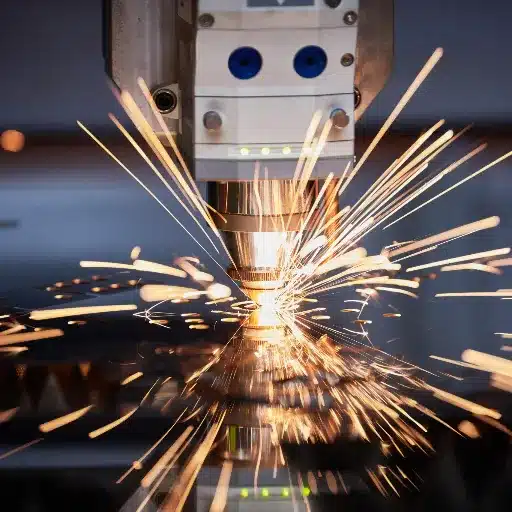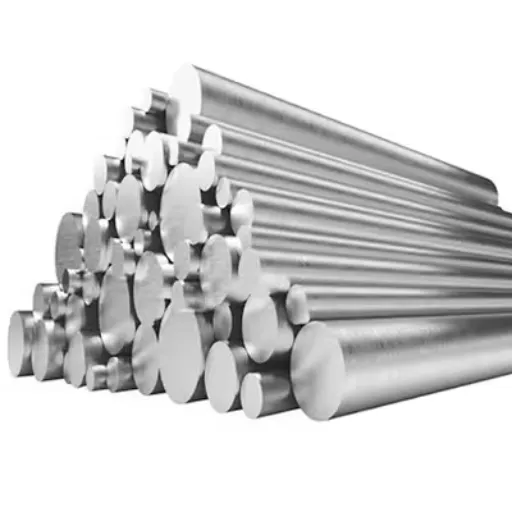The discussion around choosing the best material for construction, manufacturing, or personal projects often centers around steel and aluminum. These two materials are used in industries and appreciated for their unique characteristics, but differ significantly in strength, weight, durability, and cost. Awareness of these differences is essential in helping you make decisions that cater to your needs. In this blog, I will comprehensively compare steel and aluminum, detailing the advantages and disadvantages of each to help you decide what material will best suit your upcoming project. If you are an engineer, designer, or DIY enthusiast, this guide is for you!
What Are the Physical Properties of Steel and Aluminum?
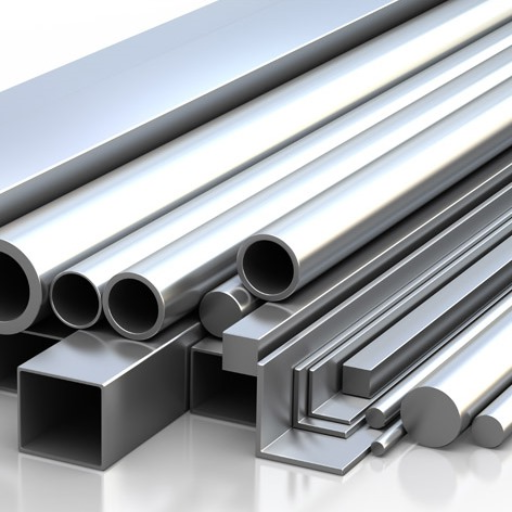
The physical properties of steel and aluminum make them suitable for various tasks that require differing features of both materials:
- Strength: Steel is much stronger and harder than aluminum. It is more suitable for structures that require high durability.
- Weight: Where weight reduction is critical, aluminum will be an advantage as it is much lighter than steel.
- Corrosion Resistance: Aluminum possesses excellent natural corrosion resistance due to its oxide layer. Steel rusts more easily than aluminum, unless treated.
- Malleability: The increased ease in shaping and forming makes aluminum more malleable, especially for complex designs.
- Thermal Conductivity: Aluminum is useful for dissipating heat in the electronics industry, as it possesses high thermal conductivity.
Knowing the differences is critical for understanding which material is more suitable for the specific demands of your project.
How Does Density Impact the Performance?
In the case of materials such as aluminum and steel, density is critical because it aids in determining the application and performance. The value of aluminum’s density is about 2.7 g/cm³, far less than steel’s, whose density is between 7.8 and 8 g/cm³, depending on the alloy. This difference results in performance considerations in several areas:
- Weight and Structural Efficiency: Reduced density of Aluminum makes it suitable for aerospace, Automotive, and transportation industries where weight reduction is prioritized. For instance, using aluminum in car components reduces overall weight, improves fuel economy, increases tire life, and lowers overall CO2 emissions.
- Strength-to-Weight Ratio: Though steel is stronger than aluminum per unit volume, steel’s lower weight per volume and greater strength make it easy for aluminum to outperform in most construction and design features, like in modern aircraft, where alloys are used to achieve a balance between strength and weight.
- Ease of Handling and Installation: Less weight also means easier handling and installation, which aids construction professionals, especially in large-scale projects, reducing labor costs and deadlines.
- Impact on Energy Consumption: Sustainable and cost-effective industries are more concerned about value. Unlike steel, lower-density aluminum is easier to transport and consumes less energy, making it preferable.
Recent technological developments have improved aluminum alloys’ performance like steel in specific applications while retaining their low weight. Considering such factors about density is critical in choosing the right substance for sophisticated engineering and industrial works.
Comparing Tensile Strength of Steel vs Aluminum
| Parameter | Steel | Aluminum |
|---|---|---|
| Tensile Strength | 400-500 MPa (common grades) | 90-310 MPa (common grades) |
| Strongest Alloy | Up to 965 MPa | Up to 710 MPa |
| Density | ~7.85 g/cm³ | ~2.7 g/cm³ |
| Strength-to-Weight | Lower than aluminum | Higher than steel |
| Corrosion Resistance | Moderate (stainless steel excels) | High (natural oxide layer) |
| Cost | Generally lower | Generally higher |
| Applications | Heavy-duty structures, machinery | Aerospace, lightweight designs |
Understanding Strength-to-Weight Ratio
When looking at the strength-to-weight ratio, aluminum always stands out because of its lower density relative to steel, which enables it to provide strength while still being lightweight. In my view, this is one of the most valuable traits of aluminum where reducing weight is crucial, such as in the aerospace or automotive industries, without hindering performance. Steel may be preferred in cases where higher absolute strength is dictated, proving once again that material should be carefully chosen based on the project’s requirements.
How Does Corrosion Resistance Differ Between Steel Vs Aluminum?
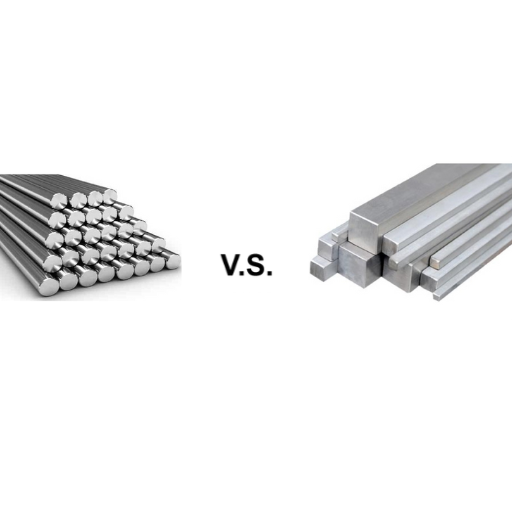
Due to the creation of a protective oxide layer upon air exposure, which prevents further oxidation, aluminum has better natural corrosion resistance than steel. Unlike aluminum, steel is susceptible to rust when exposed to moisture and oxygen unless coated or made of stainless steel, which contains chromium for improved resistance. For environments with high humidity or salt exposure, aluminum is ideal, while for steel, regular maintenance or additional coatings is needed to resist corrosion effectively.
What Is the Role of Oxide Layer in Corrosion?
The oxide layer aids in corrosion resistance of metals, including aluminum and stainless steel. When coming into contact with oxygen in the environment, some metals automatically develop a thin and stable oxide layer on their surface. This layer serves as a barrier to restrict the metal’s interaction with corrosive elements like water, oxygen, and salts. For example, aluminum produces a protective aluminum oxide (Al₂O₃) layer that is a few nanometers thick, which diminishes the oxidation of the other aluminum material below.
Similar explanations can be provided for stainless steel; it contains chromium, forming a passive chromium oxide (Cr₂O₃) layer. In addition to providing surface protection, this layer can self-repair any damage done to it, ensuring prolonged defense under tough conditions. Recent findings suggest that the chrome content of stainless steel needs to be greater than 10.5% for the oxide film to be useful, improving the alloy’s resistance to corrosion and effectiveness in stainless steel.
Studies have indicated that corrosion resistance highly depends on the thickness and density of the protective oxide layer. As a case, it is crucial to note that in industrial settings where water and other contaminants are aggressive, metals with protective oxide layers serve a vital role in ensuring structural integrity. More recently, it has been reported that anodization, which applies an electrolytic process, strengthen aluminum by increasing the protective oxide layer, resulting in its protective attributes significantly compared to untreated metals—sometimes increasing resistance up to 20 times.
Nonetheless, all oxidized layers have shortcomings. In highly acidic conditions or as a result of mechanical strain, they may fail and result in pitting or other forms of localized corrosion like crevice corrosion. As these issues become prominent, modern engineering approaches in polymers and other materials aim to develop coatings or treatments to complement the protective oxide layer and increase its strength in aggressive environments.
Along with elements such as the growth rate and the depletion rate, the balance between the increase and decrease of the oxidized layer that it undergoes determines its life span, which becomes crucial. Metals will extensively rely on this balance in more critical sectors like construction, aerospace, and marine applications.
Is Aluminum More Corrosion Resistant Than Steel?
| Parameter | Aluminum | Steel |
|---|---|---|
| Corrosion Resistance | Corrosion in salt environments | Moderate, rusts without protection |
| Reaction to Salt | A stable oxide layer prevents further damage | Rusts faster in salt environments |
| pH Compatibility | Best between pH 4-7 | Best above pH 10 |
| Protective Coating | Often anodized for extra resistance | Needs coatings to prevent rust |
| Durability | Stable oxide layer prevents further damage | Rust spreads if untreated |
| Cost of Maintenance | Low due to natural resistance | Higher due to rust prevention needs |
Impact of Galvanization on Corrosion
Galvanization, which involves coating zinc over iron or steel, enhances protection from oxidizing rust significantly more than without it, as the protective layer acts as a sacrificial anode.
Which Metal Is Best for Welding: Steel or Aluminum?
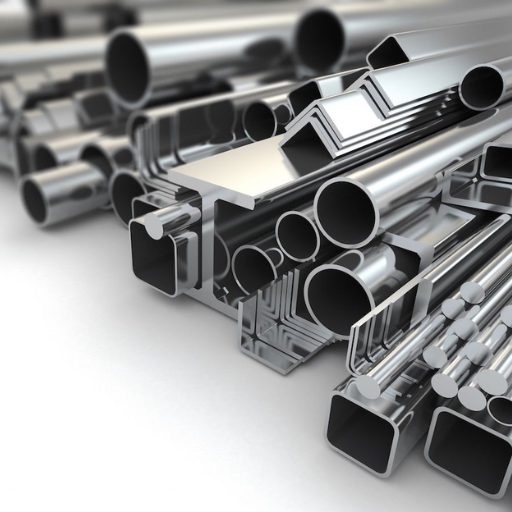
Steel alloys yield the most significant advantage when welding. Compared to aluminum, steel is a better forgiving and far more versatile option due to its lower thermal conductivity and higher melting point. This significantly reduces the chances of warping and burn-through during the welding process. While durable and lightweight, aluminum requires specialized techniques and equipment because of its extreme sensitivity to heat. It all boils down to project specifics such as necessary weight, strength, and corrosion resistance.
Challenges in Welding Aluminum vs Steel
| Parameter | Aluminum | Steel |
|---|---|---|
| Thermal Conductivity | High, dissipates heat quickly | High, cause distortion and cracking |
| Melting Point | Low, ~660°C | High, ~1370°C |
| Oxide Layer | Forms rapidly, high melting point | Minimal oxide layer |
| Porosity Issues | Prone to hydrogen absorption | Less prone to porosity |
| Plastic Range | Narrow, harder to control weld pool | Wide, easier to manage |
| Thermal Expansion | High, causes distortion and cracking | Lower, more stable |
| Electrical Conductivity | High, requires higher welding currents | Lower, easier to weld |
| Welding Equipment | Specialized tools often required | Standard tools suffice |
Choosing the Right Alloy for Welding
It is critical choosing the correct alloy for welding to ensure that the welds are reliable, strong, and durable. Options of alloys of welding materials are based on the application, mechanical properties, environment, and base materials. Given below are five commonly used alloys for welding and their key characteristics:
- 6061 Aluminum Alloy
- Description: It is a versatile, heat-treatable aluminum alloy widely used in structural applications.
- Properties: possesses high strength, good corrosion resistance, and excellent machinability.
- Applications: used in the aerospace, automotive, and construction industries.
- 5356 Aluminum Alloy
- Description: Non-heat treatable alloy with excellent corrosion resistance.
- Properties: possesses high tensile strength with good resistance to cracking.
- Applications: ideal for marine structures, storage tanks, and pressure vessels.
- ER70S-6 Steel Alloy
- Description: Carbon steel filler metal is most frequently used for the welding of mild and low-alloy steels.
- Properties: good weldability with high tensile strength and smooth bead appearance.
- Applications: popular in construction, automotive, and general fabrication.
- 309 Stainless Steel Alloy
- Description: This is a specialty alloy for dissimilar metal welding, such as stainless steel or carbon steel.
- Properties: dependably weldable with high heat and corrosion resistance.
- Applications: used in environments with high temperatures and industrial machinery.
- 4045 Aluminum Alloy
- Description: This alloy is used for cladding, brazing, and other high-strength applications such as cladding seams.
- Properties: Excellent bonding capabilities and corrosion resistance.
- Applications: Found in components like exchangers for aerospace and in the aerospace industry.
Optimum weld quality in terms of mechanical and metallurgical properties achievable depends on alloy selection, making carefully considering project-specific requirements indispensable.
How Do Malleability and Conductivity Compare?

Both malleability and conductivity are essential features of metals, which serve different purposes. Conductivity and malleability are major characteristics of metals. The former fits in defining the ability of a metal to conduct electricity or heat. At the same time, the latter refers to the ability of a metal to be shaped into thin sheets without breaking. As such, a metal like copper or aluminum earns the title of super metal as it performs excellently in both factors.
Is Aluminum More Malleable Than Steel?
| Parameter | Aluminum | Steel |
|---|---|---|
| Malleability | High, easily shaped | Lower, more rigid |
| Ductility | High, stretches without breaking | Moderate, less stretchable |
| Forming Capability | Suitable for intricate shapes | Limited to simpler shapes |
| Resistance to Cracking | More prone to stress | More prone under stress |
| Applications | Thin walls, detailed designs | Heavy-duty, structural uses |
Which Has Better Conductivity: Steel or Aluminum?
| Parameter | Aluminum | Steel |
|---|---|---|
| Electrical Conductivity | ~6-15 million Siemens/m | ~6-15 million Siemens/m/ |
| Thermal Conductivity | ~235 W/m·K | ~45 W/m·K (carbon steel) |
| Relative to Copper | 61% of copper’s conductivity | 3-15% of copper’s conductivity |
| Applications | Electrical wiring, heat sinks | Structural, limited electrical uses |
What Factors to Consider When Choosing Between Steel and Aluminum?
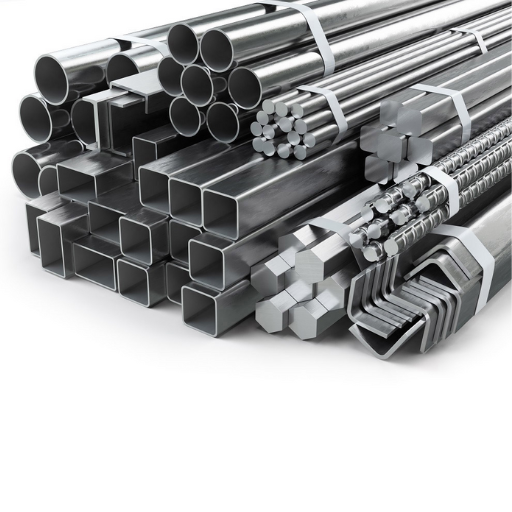
Think about these deciding factors the next time you have to choose between aluminum and steel:
- Strength: If an application needs a high load-bearing structure to be added, enduring, like in construction, steel would be a better option than aluminum because steel is far stronger and sturdier.
- Weight: In industries like aerospace and transportation, where weight is a reductive factor, aluminum is far better suited than steel because it is lighter.
- Corrosion Resistance: Steel lacks corrosive resistance compared to aluminum because, unlike steel, aluminum has a protective oxide cover that makes it far less corrosive. However, for certain needs, stainless steel provides equal resiliency to corrosion.
- Cost: For large-scale projects with constricted budgets, steel is a better cost-effective option, as it is not only practical but also economically affordable compared to aluminum.
- Ease of Fabrication: Customization and design flexibility are far easier and more supple than steel or aluminum, making customization far easier.
- Thermal and Electrical Conductivity: Aluminum would win the trophy for wiring or heat dissipation purposes because it conducts electricity and heat far better than other metals.
Always balance these factors together with the constraints of your project to achieve the best performance results.
Analyzing Cost Implications
There are different factors to consider when evaluating the cost implications of using Aluminum versus Steel for a project. A cost comparison analysis should consider the following factors: pricing for raw materials, costs for processing, transportation expenses, maintenance needs, and savings over time. Here are five factors that require particular attention:
- Raw Material Costs: Aluminum tends to be costlier than steel on a per-pound basis. However, given Aluminum’s lower density, less material might be needed to achieve the same end result, which translates to some level of offset of the initial expenditure.
- Processing Costs: Due to aluminum’s malleable properties, it is relatively easier to manufacture, lowering labor, machinery, and other processing costs. Steel, on the other hand, is harder and requires specialized tools, which increases processing costs.
- Transportation Costs: Aluminum is cheaper to transport than steel due to its lightweight. This is very cost-effective for large-scale projects, especially those requiring long-distance shipping.
- Maintenance Costs: Aluminum’s natural corrosion resistance lessens the overall need for maintenance, coatings, or replacements, while steel requires additional protective measures to avert rust, increasing maintenance costs.
- Savings Over a Lifetime: Although aluminum’s upfront cost is high, its low maintenance and durable properties make it lightweight. This enhances durability while lowering lifecycle costs over time, making it more economical for certain applications in the long run.
Evaluating these factors tailored to the project will enhance the value of a decision made while ensuring performance-maximized cost efficiency.
Examining Environmental Impact
When comparing the environmental effects of different materials, such as aluminum and steel, their energy usage, recyclability, and overall carbon footprint must be considered.
- Energy Usage
The production of aluminum, especially with the smelting techniques of Bayer and Hall-Héroult, is notorious for being energy-consuming. Recent figures indicate that the electricity used to produce primary aluminum is at least 14,000-15,000 kWh per ton. Nevertheless, some of the energy burden has begun to shift due to improvements in renewable energy integration in smelting plants. Steel production also requires a large quantity of energy, especially with blast furnaces; however, new EAF technologies use less electricity and increase the amount of recycled steel used.
- Recyclability
One of aluminum’s most notable environmental advantages is that it can be recycled infinite times without diminishing quality. Reports from The Aluminum Association claim that almost 75% of the aluminum produced since the 1880s remains in circulation today due to the exceptional recycling rates. Steel also possesses a great deal of recyclability but tends to lose value over multiple instances of recycling, which presents a challenge in some cases.
- Carbon Footprint
Analyzing the carbon footprint of the production of goods is a significant metric in assessing its environmental impact. The carbon footprint of primary aluminum production is around 12 – 17 metric tons of CO2 emitted per ton produced, owing to the high energy requirements. However, aluminum hydropower-driven smelting can achieve significantly lower emissions than coal-powered production facilities. Conventional methods of steel production emit approximately 1.85 metric tons of CO2 per ton, while EAF-based steel has much lower emissions of roughly 0.4 – 0.8 metric tons of CO2 per ton.
- Lifecycle Analysis
In terms of lifecycle, the lightweight characteristic of aluminum leads to fuel efficiency in transportation and structures, including automotives and aircraft, subsequently saving energy. Reduction of weight in vehicles aids in decreasing fuel consumption and exhaust emissions, which in turn mitigates the material’s overall carbon footprint from emissions during production. Steel has fewer advantages due to increased weight, but it offers an enhanced, durable lifespan spanning decades due to its strength.
Recent Breakthroughs and Developments
In the pursuit of further reducing the environmental impact of materials, numerous companies are adopting more innovative cutting strategies, such as producing low-carbon aluminum with renewable energy which is gaining momentum. Similarly, the green steel production through hydrogen-based reduction like the Hybrit project in Sweden is expected to significantly cut carbon emissions in the steel industry.
Considering specific projects and their performance needs, stakeholders, alongside these factors, can make sustainable decisions. The decision of using aluminum, steel or other materials is greatly influenced by the ecological concerns of the project and the material’s lifecycle advantages.
Considering Application Needs
Evaluating a material’s characteristics for a given engineering application requires attention to details related to the project’s performance, sustainability, and lifecycle goals. While other factors are also considered, the ones outlined below will be the most influential in guiding a selection.
- Sustainability Criteria
- Data: Steel’s tensile strength ranges between 400 and 550 MPa, while some aluminum alloys can reach 400 MPa. Steel is generally the material of choice when there is a critical need for long-term load-bearing.
- Application Example: Steel is used to construct Bridges and high-rise buildings. It is also widely used in manufacturing components of heavy machinery due to its strength.
- Strength:
- Data: Aluminum has a higher Strength-to-weight ratio than comparably heavy steel, while aluminum weighs one-third the weight of steel.
- Application Example: The other industrial sectors that have seen the benefits of reduced weight include aerospace and automotive, where aluminum is used extensively for fuel economy reasons.
- Weight-to-Strength Ratio:
- Data: Aluminum is highly resistant to corrosion, especially in marine environments, due to the protective oxide layer it readily forms. In comparison, steel can only resist rust when protected by additional measures like galvanization.
- Application Example: Aluminum’s corrosion resistance also benefits the construction of Ships, coastal infrastructure, and storage tanks.
- Recyclability and Its Effect On The Environment
- Data: Steel and Aluminum are materials with great recyclability. While aluminum achieves a 75% to 80% recycling rate, steel has a greater than 85% recycling rate. Nonetheless, recycling aluminum requires much less energy than creating new aluminum material.
- Application Example: The packaging and consumer products industries, striving for greener operations, focus on aluminum due to its lower carbon footprint during recycling.
- Electrical and Thermal Conductivity
- Data: Aluminum is much better than steel for applications needing heat transfer or electricity, as it conducts heat and electricity much better.
- Application Example: Due to its excellent conductivity, aluminum is also used in heat exchangers, electric wiring, and electronics.
These supporting factors and the given data help ensure that the material selection for a given project fulfills the ecological and functional requirements. Stakeholders focusing on implementation specifics benefit from improved performance, sustainability results, and project efficiency.
References
- University of Illinois Chicago – Comparing Thermal Conductivity: Steel vs Aluminum
- University of Texas – Comparison of AlSi10Mg and Al 6061 Processed Through Additive Manufacturing
- Exploratorium – Wooden vs. Aluminum Bats: Science of Baseball
Frequently Asked Questions (FAQ)
Q: What are the key differences between aluminum and steel?
A: Aluminum is generally lighter and less dense than steel, about 2.5 times less dense. Steel is stronger than aluminum, offering higher strength and wear resistance. These differences make aluminum the preferred choice for applications where weight is critical, while steel is often chosen for its strength and durability.
Q: How do stainless steel and aluminum compare regarding corrosion resistance?
A: Stainless steel and aluminum offer good corrosion resistance, but they do so differently. Stainless steel contains chromium, which forms a protective oxide layer, while aluminum forms a layer of aluminum oxide that protects it from corrosion. However, aluminum is often used in environments where rust and corrosion are significant concerns, as it is less likely to corrode than steel.
Q: What are the advantages of using aluminum alloys over carbon steel?
A: Aluminum alloys are lighter and often offer better thermal conductivity than carbon steel. The aluminum oxide layer makes them resistant to rust and corrosion. Additionally, aluminum alloys are easier to shape and form, making them ideal for applications requiring intricate designs or where weight savings are crucial.
Q: Why is aluminum often used in the aerospace and automotive industries?
A: Aluminum is often used in these industries due to its lightweight nature, which helps improve fuel efficiency and performance. Its high strength-to-weight ratio and ability to resist rust and corrosion make it ideal for aircraft and vehicle parts like the 6061 aluminum.
Q: How does galvanizing affect the performance of steel compared to aluminum?
A: Galvanizing steel involves coating it with zinc to enhance its rust and corrosion resistance. While this process improves steel’s lifespan, aluminum naturally resists corrosion due to its aluminum oxide layer, often making it better than steel in environments where rust is a concern.
Q: Are there differences in thermal conductivity between aluminum and steel?
A: Yes, aluminum generally has better thermal conductivity compared to steel, making it a superior choice for applications requiring efficient heat dissipation, such as heat exchangers and cooling systems.
Q: In what scenarios is steel the preferred material over aluminum?
A: Steel is preferred when strength and durability are more critical than weight savings. Construction beams, heavy machinery, and tools often use steel because it is stronger than aluminum and can withstand greater stress and wear.
Q: What are the characteristics of steel that make it suitable for construction?
A: Steel alloys used in construction offer high strength, durability, and the ability to withstand heavy loads and harsh weather conditions. Steel is also more ductile than other materials, allowing it to bend without breaking, which is crucial in earthquake-prone regions.
Q: How does anodizing affect aluminum compared to steel?
A: Anodizing aluminum enhances its corrosion resistance and wear properties by thickening the natural oxide layer. This process does not apply to steel, as steel relies on processes like galvanizing or using stainless steel to improve its corrosion resistance.
Q: How does the melting point affect the choice between aluminum and steel?
A: Steel has a higher melting point compared to standard aluminum, which can make it more suitable for high-temperature applications. However, aluminum’s lower melting point allows for more effortless casting and shaping into complex forms, which can be advantageous in manufacturing.



